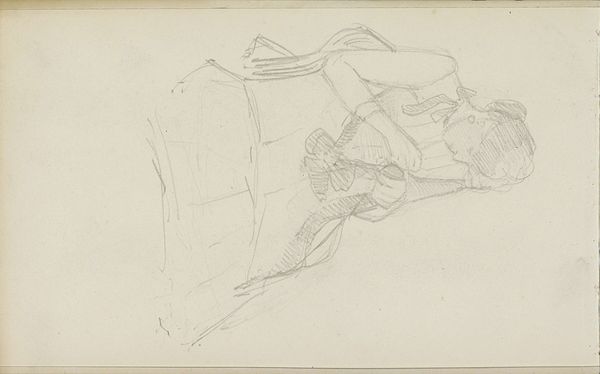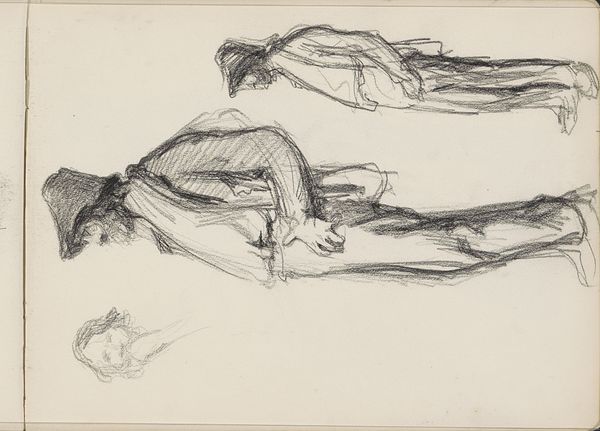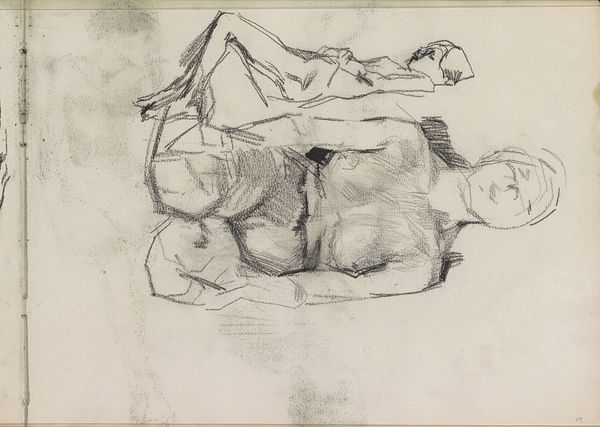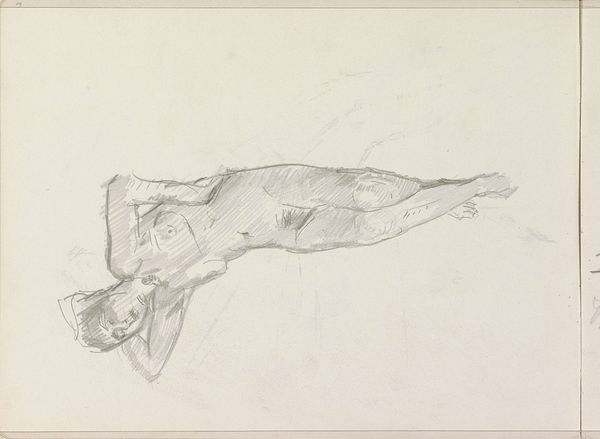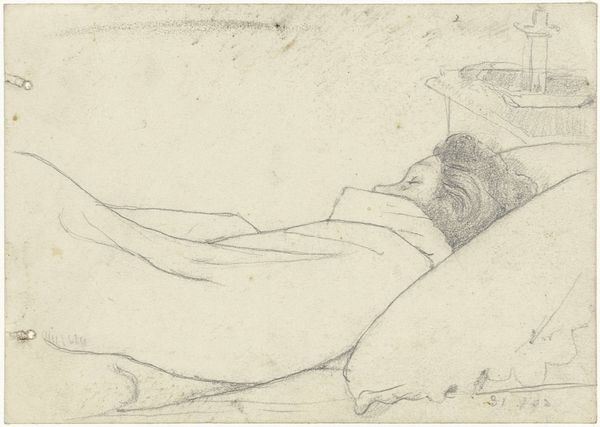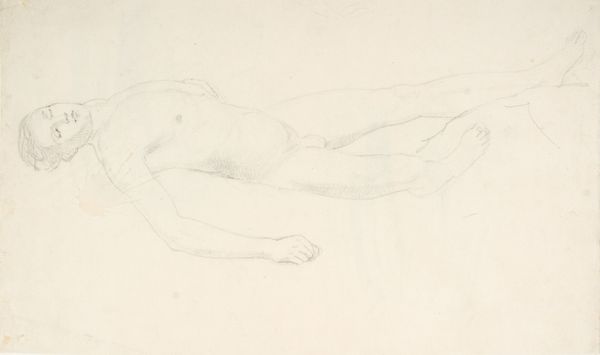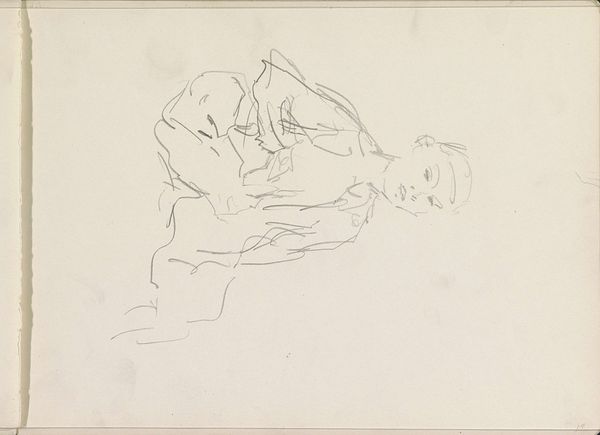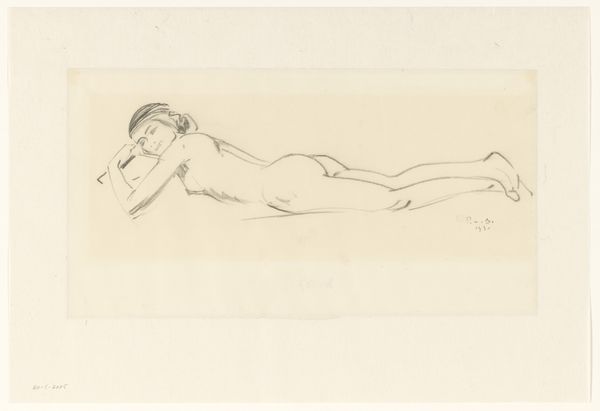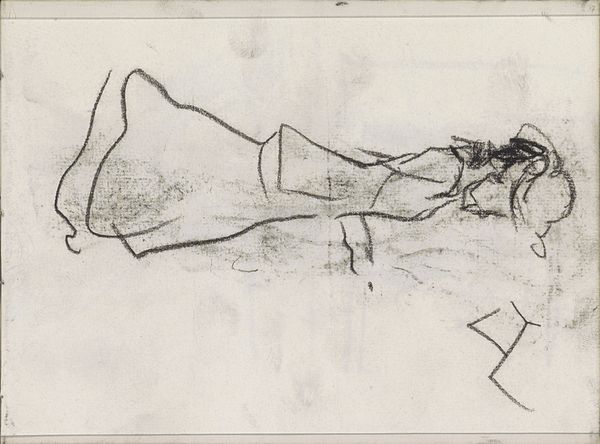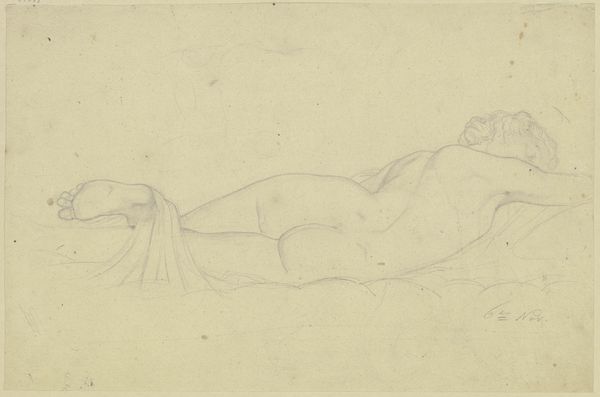
drawing, pencil
#
pencil drawn
#
drawing
#
impressionism
#
pencil sketch
#
figuration
#
pencil
#
nude
Copyright: Rijks Museum: Open Domain
Curator: Willem Witsen’s “Standing Female Nude with Raised Head,” created circa 1887-1892, is a striking pencil drawing here at the Rijksmuseum. What’s your initial take? Editor: Spare. Almost fragile. The delicate lines seem to capture a fleeting moment, an impression more than a precise rendering of the figure. There's a rawness to it. Curator: That’s insightful. Witsen, embedded in Amsterdam's art circles, explored themes of intimacy and everyday life, challenging the dominant academic style. This nude reflects a shift towards a more naturalistic portrayal. We must remember the complicated, class-based hierarchies that determine which bodies become accepted, public art. Editor: I’m struck by the composition. The head, thrown back, creates this strong diagonal line that carries the eye right across the body. The soft hatching emphasizes the curves and volumes, while the sketch-like quality reveals Witsen's process. I see the values in gray scale very directly. Curator: Absolutely, and it's fascinating to consider that against the backdrop of increasing industrialization and urbanization. Artists sought to capture the authentic, the unvarnished truth, as a form of social commentary. How might Witsen have understood the female form, or objectified the model? Editor: The lack of precise detail almost empowers the viewer, though. We're invited to participate, to fill in the gaps, to complete the image in our own minds. It resists being overly definitive. Curator: I agree. But can such a seemingly modest drawing disrupt deeply ingrained power structures? Doesn't it risk merely reinforcing the voyeuristic male gaze? Editor: It’s definitely open to interpretation. Though the light, fleeting lines bring out a certain vulnerable realism. Maybe there's something inherently honest about its simplicity? Curator: Perhaps. Ultimately, its significance lies in how it embodies a particular moment in art history: a move away from idealized forms toward a more direct and intimate representation of the human body, within an evolving cultural framework. Editor: I appreciate how that honesty resonates through the art making, through to the finished artwork. That, for me, is where the aesthetic value of this striking piece shines.
Comments
No comments
Be the first to comment and join the conversation on the ultimate creative platform.


